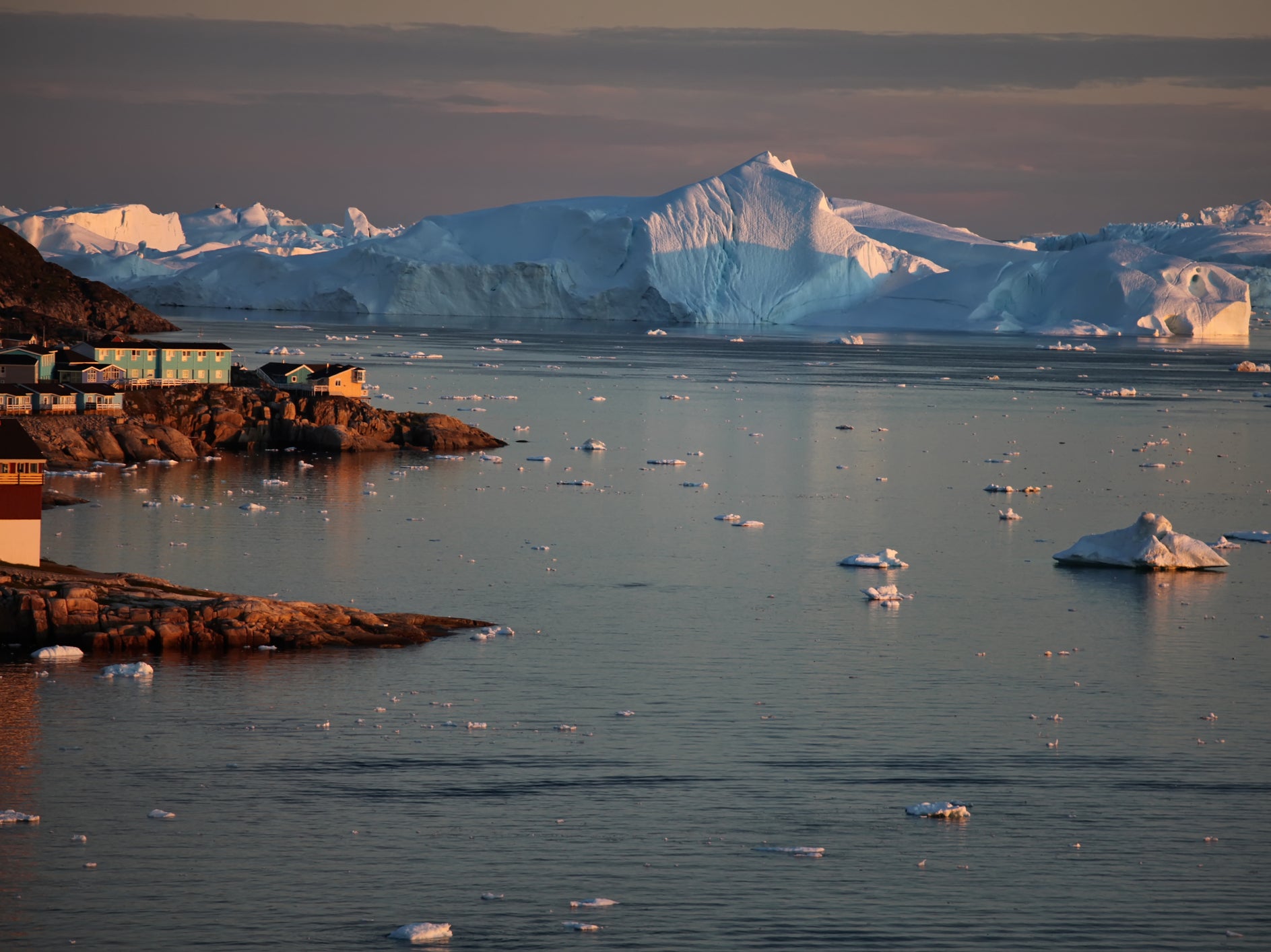Climate crisis could still be affecting size of Greenland ice sheet in thousands of years
After thousands of years of expansion, Greenland’s ice sheet has been retreating since the 1980s

Your support helps us to tell the story
From reproductive rights to climate change to Big Tech, The Independent is on the ground when the story is developing. Whether it's investigating the financials of Elon Musk's pro-Trump PAC or producing our latest documentary, 'The A Word', which shines a light on the American women fighting for reproductive rights, we know how important it is to parse out the facts from the messaging.
At such a critical moment in US history, we need reporters on the ground. Your donation allows us to keep sending journalists to speak to both sides of the story.
The Independent is trusted by Americans across the entire political spectrum. And unlike many other quality news outlets, we choose not to lock Americans out of our reporting and analysis with paywalls. We believe quality journalism should be available to everyone, paid for by those who can afford it.
Your support makes all the difference.The global climate crisis due to emissions of greenhouse gases could continue to impact the size of the Greenland ice sheet for “thousands of years”, researchers have said.
The enormous ice sheet is the second-largest on Earth after the Antarctic ice sheet, and covers 1.5 million sq m, with the ice reaching up to 3,000m (9,800 feet) deep.
Rising global temperatures are already melting Greenland’s ice and glaciers and causing sea levels to rise, but how fast and how much this will occur remains uncertain.
However, new modelling by researchers at the Alfred Wegener Institute in Germany, showing the numerous times the ice sheet has grown and shrunk over the past 125,000 years, reveals a significant lag – of several thousand years – between high-temperature climates and melting, and low-temperature climates and ice expansion.
“We found that the times when the ice sheet was largest and smallest, respectively, lag the times when Greenland’s climate was coldest and warmest by several thousand years,” said Dr Hu Yang, lead author of the study.
During the Holocene period (the past 10,000 years), which is usually considered to be stable, Greenland experienced a gradual summer cooling, which the researchers said was primarily due to changes in the Earth’s orbit of the Sun. This summer cooling had driven a progressive growth of the Greenland ice sheet, from its minimum extent at between 6,000 and 5,000 years ago until the industrial revolution.
The researchers said that though the industrial age caused global average temperatures to begin rising in the early 19th century (around the 1830s), the rapid speed of the temperature rise meant the Greenland ice sheet began to lose mass from the 1980s onwards.
Speaking to The Independent, Dr Yang said: “Warming temperatures only melt the ice at the limited margins of the ice sheet during a few months in the summer.
“The summit, or the inner of the ice sheet, is difficult to melt – because of the topography the elevated air temperature is too cold. Once the margins of the ice sheet have been removed, the inner parts start to slide more quickly and lose mass.
He said this process “takes time to achieve its final comfortable state, not within a hundred years, but in the order of a few thousand years.
"We need to be aware that the Greenland ice sheet has been standing there for at least three million years."
He warned that post-industrial human activity has emitted CO2 at a rate more than 100 times faster than the average natural CO2 increase seen during the last deglaciation – around 18,000 - 10,000 years before the present.
“The lag is always there,” he said. “The atmosphere and ocean temperature needs time to rise.”
But he added: “The ice sheet melt at the margins is slow. Nevertheless, the ice sheet will slowly achieve its comfortable state, which may contribute to sea level rise perhaps more than 10 times than what we will witness this century.”
Atmospheric carbon is currently more than 410 ppm, around the same level as it was about 3 million years ago. At that time, the highest sea level was about 10-25 metres higher than today, Dr Yang said.
“If we do not limit our emissions, by the end of this century, the CO2 level will be more than four times the pre-industrial level.”
He said that the last time atmospheric carbon levels were that high, during the cretaceous period, there was no ice sheet on Greenland at all.
“What we do in this century will determine the destiny of the climate and ice sheet in the coming centuries,” he added.
Dr Uta Krebs-kanzow, also from the Alfred Wegener Institute, said: “Within this century, melting of the Greenland ice sheet could, in the worst case of warming, possibly increase the sea level by tens of centimetres.
“However, a more significant sea level rise from melting could be irreversible and last for several millennia, even if we can stop or reverse the warming.”
The research is published in the journal Plos One.
Join our commenting forum
Join thought-provoking conversations, follow other Independent readers and see their replies
Comments